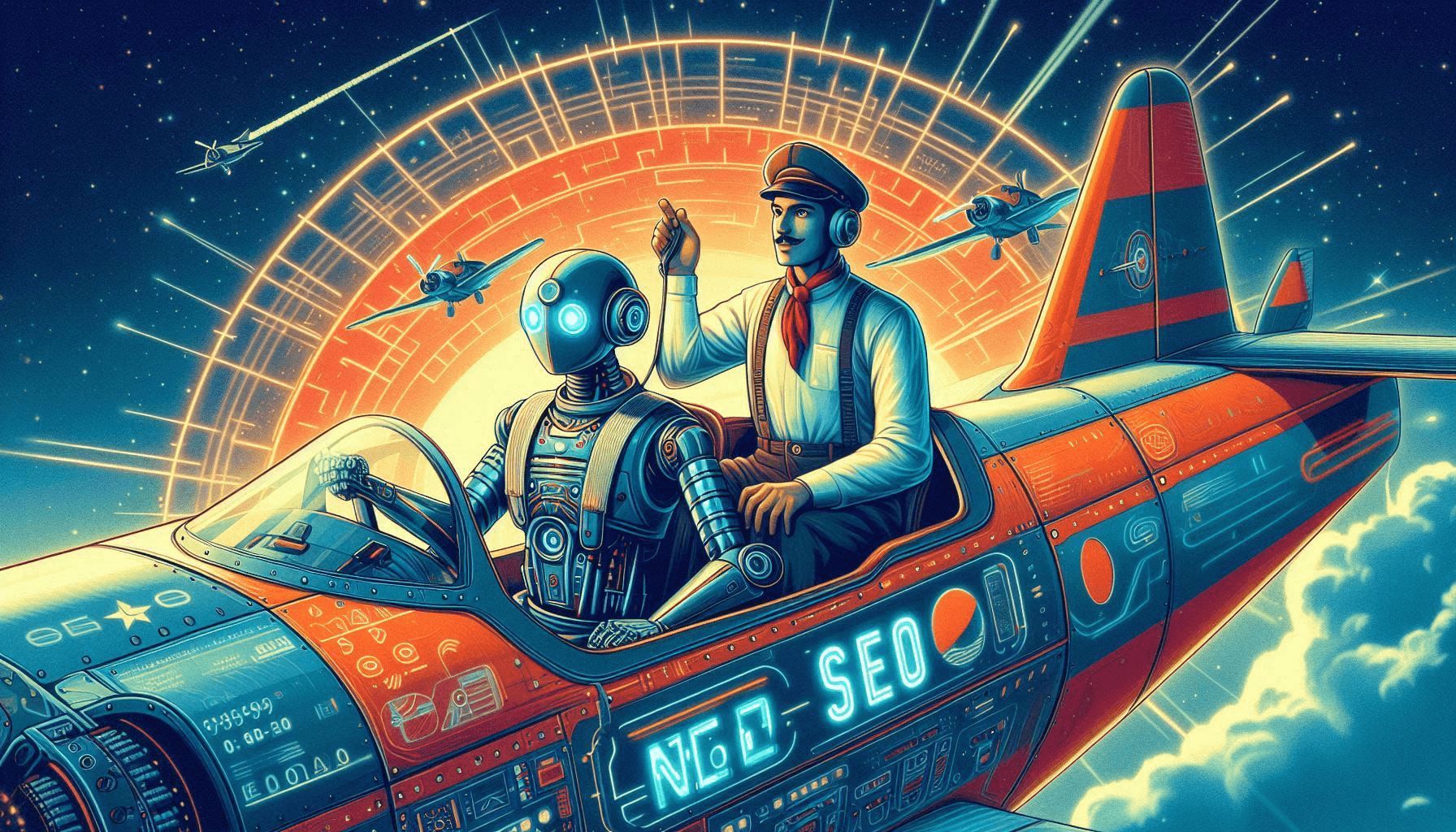How to Properly Use AI for Content Creation
Introduction
The rise of artificial intelligence has transformed various sectors, with AI content creation becoming a significant innovation. Leveraging AI to generate content now enables businesses to produce high-quality material efficiently. Understanding the potential and practical application of this technology is crucial for modern digital marketing strategies.
What is AI Content Creation?
AI content creation refers to the process where artificial intelligence tools generate written, visual, or audio content autonomously. These tools use algorithms and natural language processing to understand and mimic human language patterns. The content produced can range from articles, blogs, and reports to social media posts and video scripts. AI content creation tools often analyze vast amounts of data to ensure the generated content is relevant, accurate, and contextually appropriate.
Why AI is Revolutionizing Content Creation
AI is revolutionizing content creation by significantly enhancing productivity. These tools can produce content at a much faster rate than humans, allowing businesses to keep up with the constant demand for fresh, engaging material. Accuracy and consistency are other key benefits, as AI minimizes the risk of human error. AI content creation also allows for extensive personalization, tailoring content to meet specific audience preferences based on data-driven insights. This level of customization improves audience engagement and drives better marketing results. AI tools can also perform keyword optimization, improving SEO performance.
Benefits of Using AI for Content Creation
Efficiency and Time-Saving
AI Content Creation significantly enhances efficiency and saves time. It processes information rapidly, enabling quicker turn-around times for generating articles, blog posts, and reports. Automation of repetitive tasks such as keyword insertion, grammar checking, and formatting allows human writers to focus on creative aspects. This ensures content is produced faster without compromising quality.
Scalability for Large Projects
AI Content Creation offers exceptional scalability for managing large projects. Organizations can handle vast amounts of content without overburdening their human resources. AI algorithms can analyze and generate vast arrays of text based on initial inputs, making it ideal for projects requiring extensive copywriting or multilingual content. This scalability ensures projects meet deadlines efficiently.
Consistency in Tone and Style
AI Content Creation maintains consistency in tone and style across all platforms. Machine learning models can be trained to adhere to specific brand guidelines, editorial standards, and writing styles. This ensures uniformity in the voice and message, crucial for maintaining brand integrity and audience trust. Consistent content strengthens overall brand presence.
Choosing the Right AI Tools
Overview of Popular AI Content Creation Tools
Various AI content creation tools offer unique features catering to different needs. SEOPilot creates SEO-optimized articles that can be published directly to your WordPress blog with a single click. You can personalize the output to match your brand with settings for length, tone, language, external links, keywords, point of view, and more! Jasper, formerly known as Jarvis, provides expansive templates for diverse writing styles. Copy.ai focuses on generating marketing copy quickly. Grammarly is renowned for enhancing text quality and correctness. Each tool aims to streamline content creation through AI, simplifying the process for writers and marketers.
Factors to Consider: Cost, Features, and User-friendliness
Cost is a significant factor when selecting an AI content creation tool. Subscription fees can vary, making it essential to evaluate budget constraints. Features offered by tools differ in complexity and utility. Some provide extensive templates and language support, while others focus on grammar and readability. User-friendliness impacts how effectively one can utilize these tools. A steep learning curve may hinder productivity. Prioritize tools that balance cost, features, and ease of use to meet specific content requirements.
Integration with Existing Platforms
Seamless integration with existing platforms enhances the utility of AI tools. Compatibility with CMS like WordPress or HubSpot ensures efficient workflow management. Some tools offer plugins or APIs that facilitate direct usage without manual adjustments. Integration with platforms like Google Docs or Microsoft Word can streamline content creation processes. Ensure the chosen AI tool supports easy integration to maximize productivity.
Best Practices for AI Content Creation
Setting Clear Objectives and Goals
Establishing precise objectives for AI content creation enhances the relevance and effectiveness of the material. It is crucial for businesses to define the purpose of the content, whether it is for engagement, information, or sales. Identifying the target audience helps in tailoring the content to meet their needs and preferences. Setting measurable goals, such as increasing website traffic or boosting conversions, ensures that the content aligns with the business’s overall strategy and objectives. This step optimizes the use of AI in content creation, providing direction and focus.
Creating a Content Strategy
A comprehensive content strategy is essential for AI content creation. This involves planning the types of content to be generated, including blogs, articles, social media posts, and more. Understanding the keywords to target, such as those frequently searched by the target audience, enhances SEO performance. Another critical element is developing a content calendar, which ensures regular and timely publication. Analyzing competitors’ content helps in finding gaps and opportunities to create unique and valuable material. Aligning the content strategy with the brand’s voice and messaging strengthens consistency and trustworthiness.
Reviewing and Editing AI-Generated Content
Editing and fact-checking ensure the accuracy and quality of AI-generated content. Human review is indispensable for correcting any errors, inconsistencies, or biases that may arise in the initial draft. This step also involves refining the language and tone to align with the brand’s standards. Ensuring that the content adheres to SEO best practices, such as proper keyword usage, enhances visibility and reach. Verified data and sources reinforce the credibility and reliability of the material. Regularly updating and revising the content keeps it relevant and valuable to the audience.
Common Pitfalls to Avoid
Overreliance on Automation
AI Content Creation offers efficiency, but relying too much on automation can lead to a loss of quality. Automated tools might struggle to capture context, tone, or nuances in the content. This may result in generic or even inaccurate information. It’s crucial to review and edit AI-generated content to ensure it aligns with the intended message and maintains high standards.
Ignoring the Human Touch
Content that lacks a human touch can feel impersonal and disconnected. While AI Content Creation can generate text quickly, it often misses the emotional and cultural resonance that human writers provide. Incorporating personal insights, anecdotes, and empathy can significantly enhance reader engagement. Balancing AI efficiency with human creativity ensures content remains relatable and compelling.
Neglecting SEO Optimization
AI-generated content often overlooks essential SEO practices. AI tools might not prioritize keyword integration, meta descriptions, or internal linking effectively. This can affect content visibility on search engines. Applying SEO strategies after generating content with AI is essential to improve search rankings. Regularly updating content with new keywords and optimizing for search intent keeps it competitive and relevant.
Future Trends in AI Content Creation
Advancements in Natural Language Processing
Natural Language Processing (NLP) has revolutionized AI content creation. Machine learning models like GPT-4 offer more nuanced and human-like text outputs. Enhanced syntactic and semantic understanding enables AI to produce highly contextual and coherent content. They interpret context, tone, and meaning more accurately, which elevates the quality of AI-generated content. As these models improve, expect more interactive and sophisticated forms of written content.
Personalization and Hyper-Targeting
AI content creation increasingly focuses on personalization. Algorithms analyze user data to tailor content specifically for individual preferences. This leads to hyper-targeting, where content is customized for narrow audience segments. AI assesses various user metrics such as browsing history, past interactions, and demographic data to create engaging, relevant content. Personalization enhances user experience, increasing engagement and conversion rates.
The Role of AI in Multimedia Content
AI is also transforming multimedia content creation. Algorithms generate image-based content, such as infographics and social media visuals, at scale. AI tools aid in video production by automating editing, scriptwriting, and even animation. Voice synthesis technologies produce high-quality audio narrations. Enhancements in these technologies mean that multimedia content can be produced faster and more cost-effectively while maintaining high quality.
Conclusion
Summarizing Key Points
AI Content Creation has significantly advanced digital marketing strategies by improving efficiency, consistency, and creativity. Automation tools streamline the content creation process, reducing operational time and costs. AI-driven analytics help identify key trends and audience preferences, enabling tailored content that resonates with readers. Ethical considerations ensure the authenticity and quality of AI-generated content, maintaining trust with audiences.
The Future of AI in Content Creation
The future of AI in content creation promises further innovations. Expect more sophisticated algorithms capable of generating highly personalized, context-aware content. Voice and image recognition technologies will integrate more seamlessly, creating multimedia content with minimal human intervention. AI will also facilitate better content translation services, allowing more global reach. With machine learning advancements, predictive analytics will provide deeper insights into content performance, driving more effective marketing strategies.
Final Thoughts on Integrating AI into Your Strategy
Integrating AI Content Creation into your strategy requires a balanced approach. Leverage AI tools to handle repetitive tasks while leaving nuanced and strategic decisions to human expertise. Continuously monitor and evaluate the performance of AI-generated content to ensure it meets the desired standards and aligns with brand voice. Staying updated with the latest AI developments helps maintain a competitive edge. Successfully blending AI capabilities with human creativity will result in a more efficient, impactful content creation strategy.







